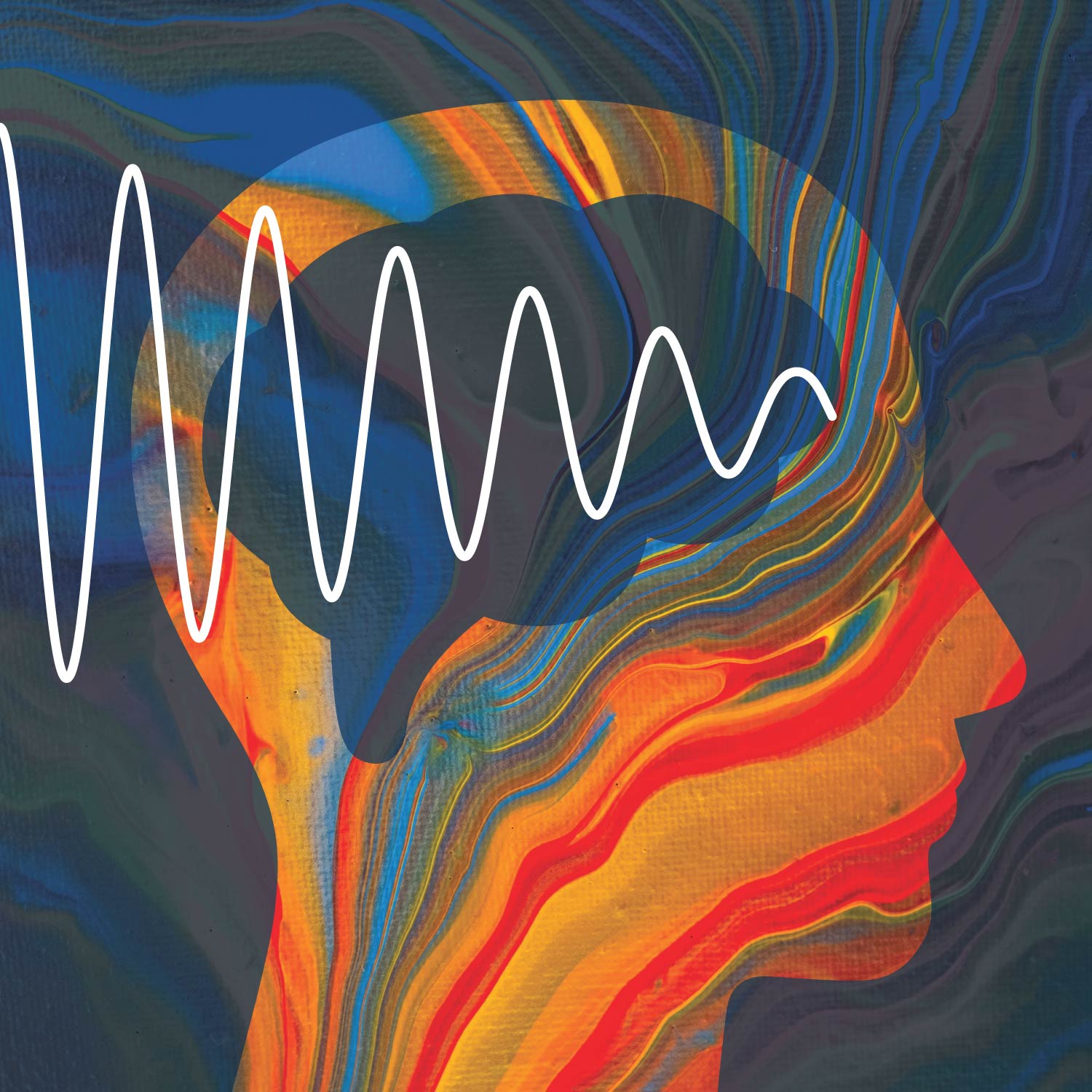Multisensory Gamma Stimulation Promotes Glymphatic Clearance of Amyloid in Alzheimer’s Disease Models

A recent study showed that noninvasive Gamma ENtrainment Using Sensory stimuli (GENUS) reduced the accumulation of amyloid in mice models of Alzheimer’s disease (AD) through the brain’s glymphatic system. The study, conducted by researchers at the Massachusetts Institute of Technology, Westlake University in China, and Boston University, was partially funded by the National Center for Complementary and Integrative Health and published in the journal Nature.
The glymphatic system plays a critical role in clearing soluble proteins and metabolic waste from the brain. The system involves arterial pulsation that drives the influx of cerebrospinal fluid (CSF) along blood vessels into the brain. Then, within the brain, an exchange of CSF and interstitial fluid (ISF) is facilitated by the AQP4 channels in the endfeet of astrocyte cells, a type of glial cell. (The endfeet are the part of the cell surrounding the blood vessels.) This is followed by the efflux of ISF, with waste being transported out of the brain and collected in part by lymphatic vessels. Aging and AD, however, can weaken the functioning of the glymphatic system by reducing arterial pulsation, lessening CSF–ISF exchange, and diminishing lymphatic drainage, leading to the toxic accumulation of amyloid and tau protein aggregates.
Another part of the glymphatic system involves groups of neurons in the brain firing at the same time to create distinct brain waves, in particular gamma waves ranging from 20 to 50 Hz in frequency. The rhythmic contraction and relaxation of small arteries—called arteriolar vasomotion—drives CSF influx and clearance and is coupled to gamma waves. In people with AD, changes are seen in gamma waves, indicating impaired brain function.
In previous studies, the investigators found that 1 hour of 40 Hz stimulation, driven by optogenetics, increased gamma waves and significantly reduced the pathogenic amyloid load in AD mouse models, whereas control stimulations at other frequencies did not. To extend the clinical application of the intervention in this study, the investigators used noninvasive 40 Hz patterned light and sound stimulation (GENUS) in AD mouse models and found that it also lessened amyloid load throughout the cortex, including the prefrontal cortex, and did so by influencing specific parts of the glymphatic system.
The study showed that multisensory 40 Hz stimulation promoted the influx of CSF into the brain cortex and the efflux of ISF flowing out. Specific changes seen in the glymphatic system after multisensory 40 Hz stimulation included increased arterial pulsatility, elevated AQP4 polarization (enhanced density of AQP4 channels in astrocyte endfeet), and dilation of meningeal lymphatic vessels. The researchers said these findings support observations that indicate brain rhythms govern CSF dynamics.
The experiments also suggested that signaling by neuropeptides, which are messenger molecules of nerve cells, may contribute to CSF dynamics. The investigators noted the long-lasting nature of neuropeptide signaling may partially explain why increased vasomotion persisted after multisensory 40 Hz stimulation had ended.
Additionally, the investigators found that vasoactive intestinal peptide (VIP) interneurons, a type of nerve cell whose neuropeptide VIP is associated with lessening AD pathology, facilitated glymphatic clearance by regulating arterial plasticity. Multisensory 40 Hz stimulation increased arterial pulsatility in a VIP-interneuron dependent manner. The researchers said that the findings of the study, consistent with prior results, highlight an interconnected relationship between glial, neuronal, and vascular cells in the regulation of CSF dynamics. And the findings suggest that vasoactive signals from neurons act on glial and vascular cells during neural waves to drive CSF clearance.
The results of this study demonstrate the potential of GENUS as a novel tool for engaging the glymphatic system to remove amyloid from the brain. Further research that links brain rhythms and vasoactive clearance may enhance the therapeutic potential of multisensory stimulation for the treatment of AD and other neurodegenerative disorders associated with the accumulation of pathogenic proteins.
Reference
- Murdock MH, Cheng-Yi Y, Sun N, et al. Multisensory gamma stimulation promotes glymphatic clearance of amyloid. Nature. February 28, 2024. [ePub ahead of print.]
Publication Date: February 28, 2024